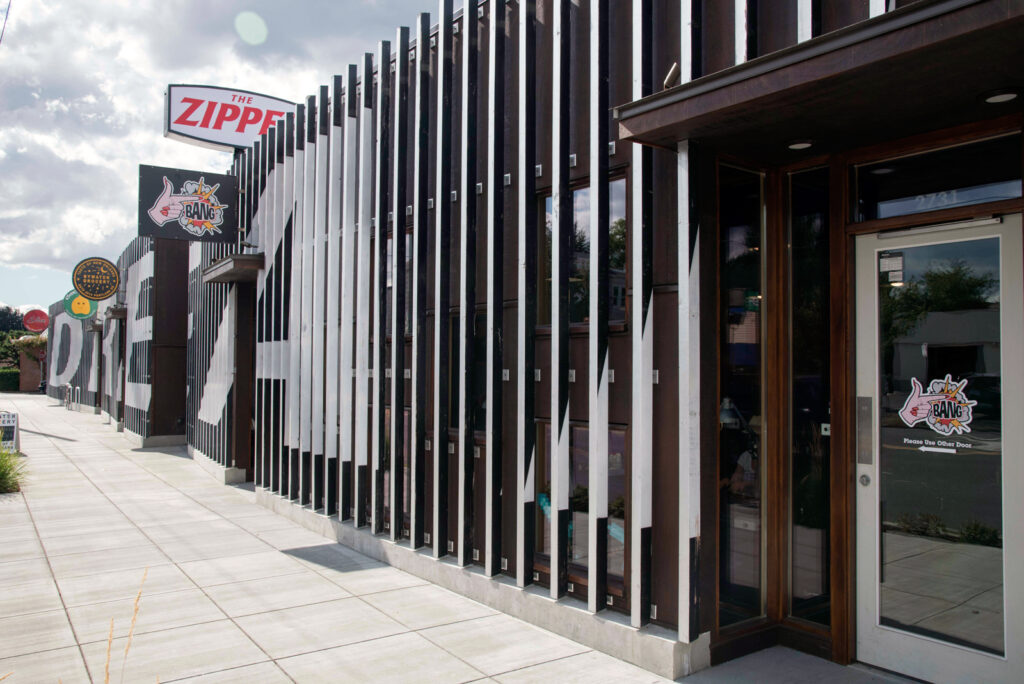Interview: Kevin Cavenaugh of Guerrilla Development

In July 2017, I spoke with Architect & Developer Kevin Cavenaugh of Guerrilla Development in Portland, OR. See more information about Guerrilla Development at guerrilladev.co. See more articles about Kevin {here}.
Kevin Cavenaugh: I knew that architects would toil for years making super-low money. That is all fine, but the bad part was that the work wouldn’t be inspiring. We would toil a decade before we had any design opportunities. So I was getting paid a shitty wage to do shitty work. It didn’t seem fun, but I loved Architecture. I wanted to design buildings. So I moved to Sacramento, which at the time was a pretty pitiful town. This was thirty years ago. I bought a house for $51,000. I could do that with my $10 per hour architecture salary. It worked. I knew real estate was going to augment my salary as an architect and make me a better architect in the process. So I bought a house and fixed it up. It was a beat-up house in a beat-up neighborhood. I learned a lot. Once you do one, it didn’t take long until I had done a couple of dozen.
Buying and fixing up a house is no different than commercial real estate. It is the same basic concept. You own the property. You buy something for A. You spend B fixing it up or making it more valuable. When you are done, if it is worth more than A+B, then you succeeded. If it is worth less than A+B, then you failed. It is that simple.
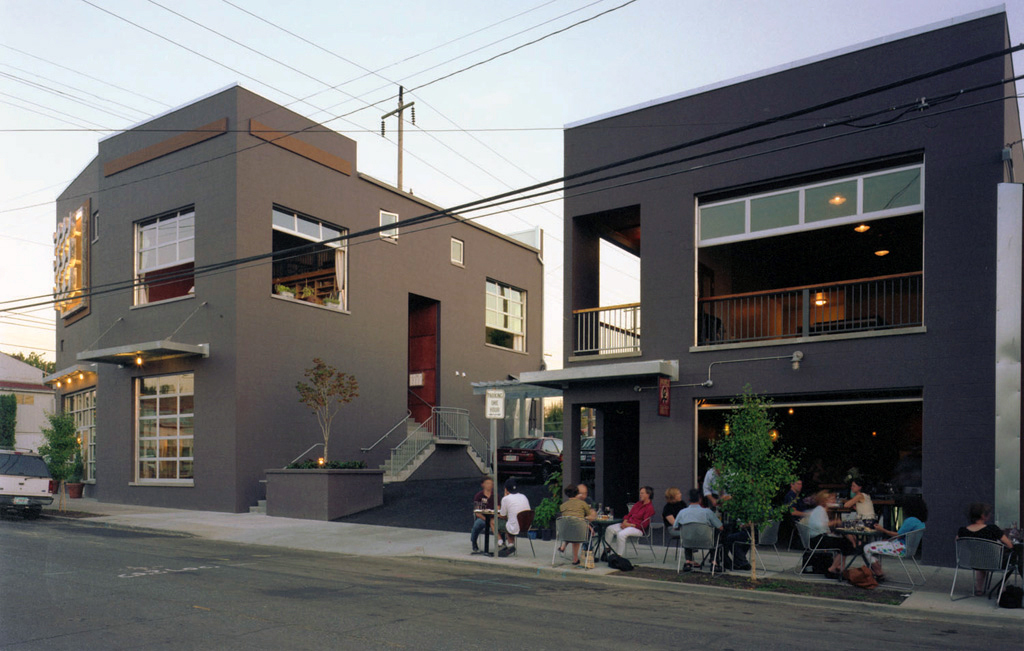
James Petty: As you were working on these projects, were you trying to get a little bit bigger and a little bit bigger?
KC: Well at the end of a couple of dozen houses I realized that I was a restorer. There wasn’t any design work in renovation. I was doing really neat turn of the last century houses. I was learning a lot about construction and historic detailing. Even as a 30-year old, no one knew I had any design skill at all. I had a feeling that I did, but I wasn’t even sure. Back then I slowly realized that while I had my day job at an architecture firm, the people that were sitting across from me at the table, the client or developer, were not necessarily smarter than me. They just had control and were calling the shots. I took a couple of them out for coffee and asked them questions about the industry. That was when I realized that fixing up houses was no different than what they were doing. It helped demystify the idea of development. I already had a risk appetite because I was fixing and keeping houses as rentals. I was renting them because once you make something, it is hard to give the keys to someone else.
JP: Would that help you finance the next project?
KC: Yeah. I would only sell when I had to refill my coffers. It was frustrating because I was still a 34-year old designer. I was doing rather tedious work at a mid-size architecture firm here in Portland. I was tired of becoming a restorer of these houses. I needed to prove to myself whether or not I could design. I thought I could. So I took two of my rental houses, and I sold them. With those proceeds, I bought a piece of commercial property. I went to my bosses. I knocked on their office doors and said, “Hey, is it OK if I hire you? Can I be the client and the employee at the same time? Do you mind?” They had nothing to gain because it was such a tiny job. It was a 54-foot
by 100-foot corner lot in a neighborhood that was on the east side of Portland in kind of a non-location. I saw it had potential. It was affordable. I bought it for $168,000. So I asked them, “Can I hire you? But can I work
on it here in the office?” I am not a licensed architect, and I couldn’t moonlight. I had two young kids. That is the last thing you want to do, work 40-hours and then come home and then work more. I am innately a lazy man. I don’t think I have ever worked more than 40 hours per week in my life.
The only reason I brought it in was so that I could do my own design. I needed the firm’s help on the technical side, the detailing, and code analysis. So I designed what is now the Box + One building. It was strange. I would draw it and draw it and draw it. I would get a paycheck once per month, and then I would get handed an invoice for three-times the amount of the paycheck at the same time. But it worked. The budget allowed for an architecture fee. I had a bank loan, and I owned the land free and clear.

JP: Finding the initial capital always seems to be the biggest hurdle. That is the complaint I hear the most.
KC: That is exactly right. Initially, I used smoke and mirrors and leverage. I had some money from the real estate so I could juggle properties to create assets and create a path forward on my first project. So I had no investors then. Post-recession I have investors for all my projects.
JP: Are you contracting out other architects to create your drawings?
KC: Yeah. Every morning I go to the coffee shop and get out the same recycled brown napkin, and I sketch what I am working on that week or month. By the time I hand the napkin to the architect, it is pretty tight with dimensions. It is more than what I call Phase Zero, which is just the program. It’s fun! It is everything that you want to do. Now in my career, I get to choose what I do. I get to draw the fun stuff and then I can pick and choose which architects I want to work with. The only reason I put my name on the dotted line and take on massive debt and massive risk is so that I can do the fun part.
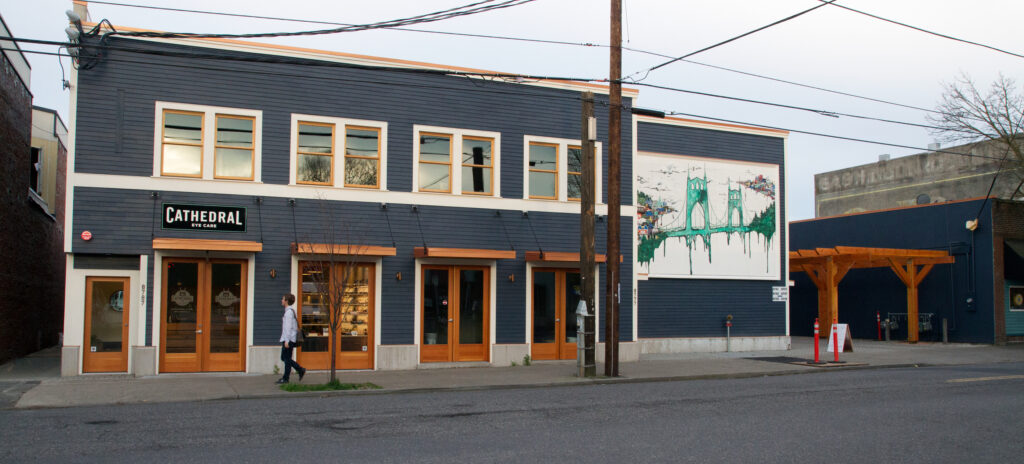
JP: How does Guerilla Development make a profit?
KC: We don’t have clients. I don’t want clients ever. The last clients I had were my parents when I was designing their house about eight years ago. They fired me. Clients get to decide Phase Zero, and they hire me at Phase One.
Someone always tells us what Phase Zero is. I look at that and think, “I would rather do family-size units and surround it with a garden and see if the finances work.” They would not give us that opportunity. Everyone else always decides what Phase Zero is. It is boring as hell to me. I don’t want someone hiring me to design X for them; I want to decide the X.
I keep all of my projects long-term. When they fail… and every single project fails… I just fix it. I get a letter from the tenant telling me they have a leak in their space. We manage our own properties. So I email it over to the guy in the desk next to mine. He is the asset manager. He runs over and fixes the leak or hires someone to fix it. When he gets back, he will tell me that one of the details was a shitty detail and that we shouldn’t do that detail that way anymore. We should do something different. We are always getting better as architects.
JP: That is a great feedback loop.
KC: If you hired me to be your architect, and there was a leak, I am not getting a letter from a tenant; I am getting a letter from your lawyer suing me. If I were your architect, I would be a lot safer and a lot less experimental with my design hand. That sounds horrible. To answer your question, 100 percent of what keeps the doors open is based on our developer fees and our management fees. With long-term ownership, all of the properties are spinning off income. We have three different ways that we are generating money. Two of them are active, and one of them is passive.

JP: So this Fair-Haired Dumbbell project… It is a big showstopper. Everyone is curious about how you are using crowdfunding. Can you talk about working with the SEC and how you used the JOBS Act to get this going?
KC: There was a lengthy timeline, and it was a circuitous random winding road. In 2009, I was really mad at banks. Crowdfunding was this neat way to minimize the seat at the table of the lender. So, of course, I was curious about that and I wanted to figure that out. I met with Fundrise. Portland was a city that they liked and fit their model. So they said, “Let’s do this! Once you get all the paperwork taken care of and a blessing from the SEC, we will make a go of it.” I did that. It took me fifteen-months and $200,000 to get through the SEC paperwork. Then I went back to Fundrise and I said, “OK, I’m ready!” They turn and go, “Oh crap, we don’t do that model anymore. We are a much bigger company than when we met with you. We went out and raised money. Gosh, we feel bad… but sorry.” What do I do? I finally have this paperwork signed by all of these states. I had already done all of the hard parts, but now what do I do? So I decided to host the offering myself on my own website. I raised 1.5 million dollars. It was crazy. It took me a while. I put the word out and we self-promoted.
JP: I have seen the video! It was amazing!
KC: The SEC actually had to bless the script on that. There are laws on what you can say and what you cannot say. So we took that video, and we raised a shit-load of money. The most money that we raised was when we were on the front of the business page of the New York Times. Once that hit, then we made it. $800,000 of the $1.5 million was in the three weeks. I would do it again.
JP: Was the SEC approval for the project specifically, or for Guerilla Development for multiple projects?
KC: It was project-specific. So we would have to go through that again. If I can do it in half the time, and for half the legal fees, then it would be a model that is worth it. If I couldn’t, then it wouldn’t.
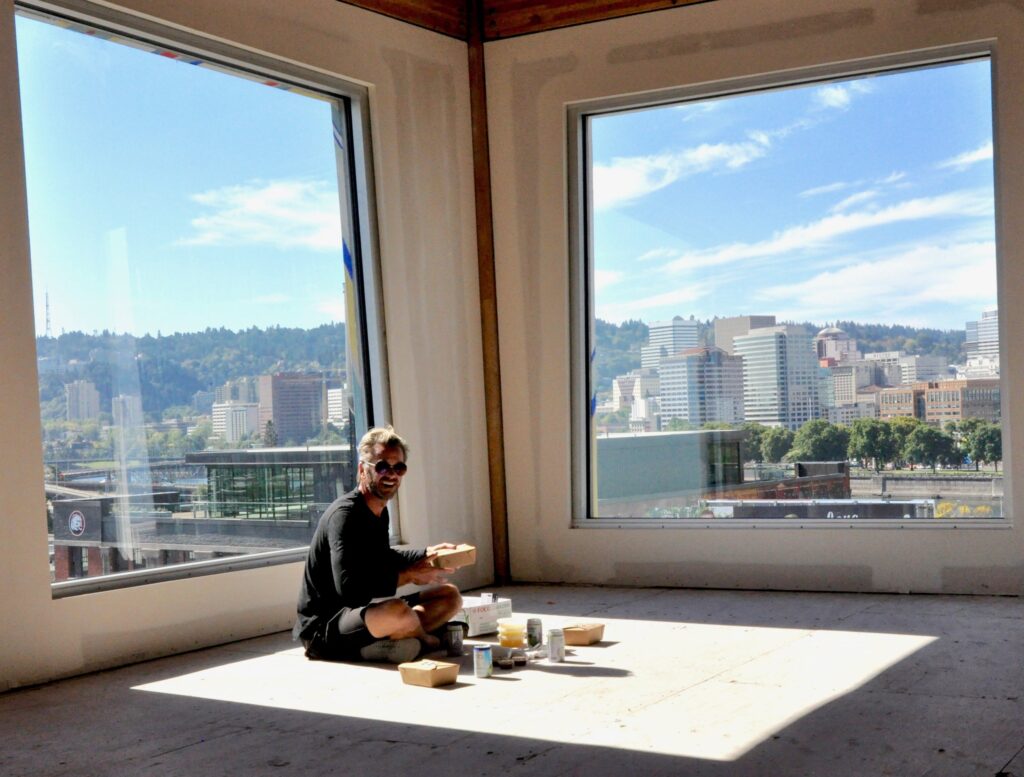
JP: The JOBS Act is still relatively new, and the government is slow to adapt to new things. Do you think as time passes by, that the process with the SEC will become smoother?
KC: With the Fair Haired-Dumbbell, I could, in theory, raise money from any state. At the end of the day, I need to pick and choose which states I accept investors from. I only chose five states. Each state has their own specific demands. For example, New York State wanted specific things from me that I wasn’t willing to do, so I chose not to take investors from New York State. Same thing for Texas. Both had a lot of interested investors. But at the end of the day, I could not get them to the table because of the regulatory hoops. But I took Washington, Oregon, Massachusetts, California, and Washington DC. That was enough.
I am currently doing a crowdfunding project, which is an unsubsidized mixed-use development. One of the units is an eleven-bed homeless SRO project. It is a profitable project and a tiny little infill project. I believe that we learn a lot as architects and as developers. Politicians should not put an entire population of poor people in one building with one address. Just think of Pruitt-Igoe. Efficiency is rarely the right long-term answer. So I have a project that helps that. It is cheaper than the city can provide homeless units for. The city pays on average $600 per month for providing housing, and without subsidy, we are offering rent for $400.
I am raising half of the money from an Oregon Intrastate Offering (OIO). It is a very streamlined and simple process. The SEC is not involved. Only the state regulators are involved. I am wrapping it up pretty soon. [See
more information on Jolene’s First Cousin project here]
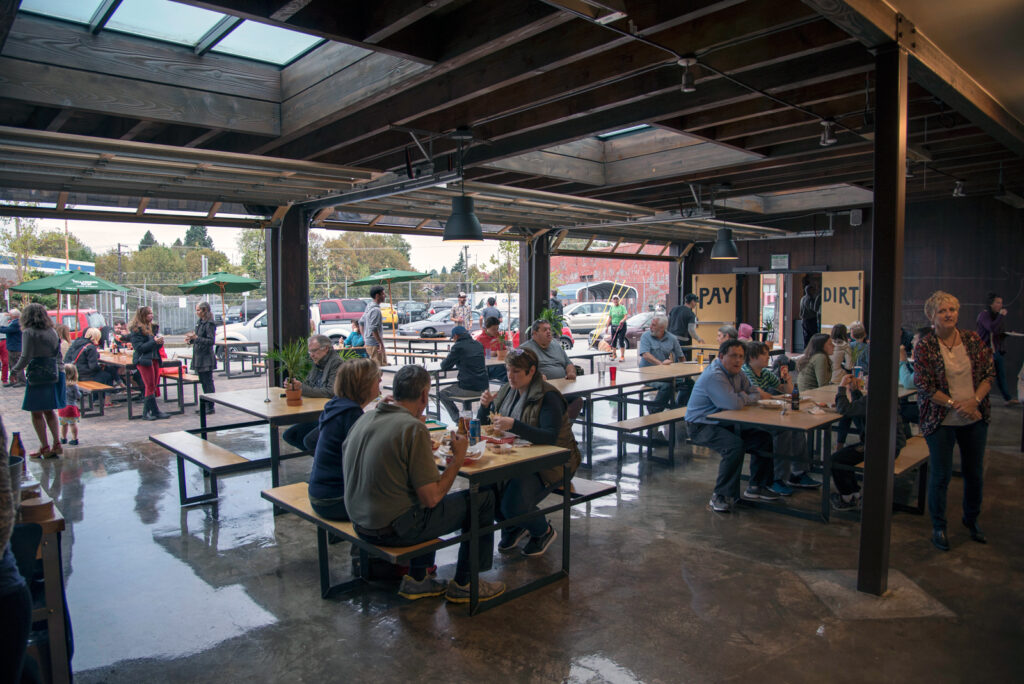
JP: You are very embedded into Portland. Every one of your projects is really curated. Has that always been your intention to make something that aggressively makes those specific locations better?
KC: It is not just random and chance. A Chipotle Grill, Starbucks, or Subway Sandwich will never be in one of my buildings. Traditional developers, the Donald Trumps of the world, monetize every move. Everything is a pro forma. Everything is a dollar. Everything has a success or failure based on profit. I am a capitalist. So profit matters such that I want to be able to do this again. These are long-term holds. I don’t have to monetize every move whether it is architectural or programmatic. If I have an empty ground floor space, it hurts everything else in the building. The right tenant for a slightly diminished rate is always a better answer than an empty space. Always.
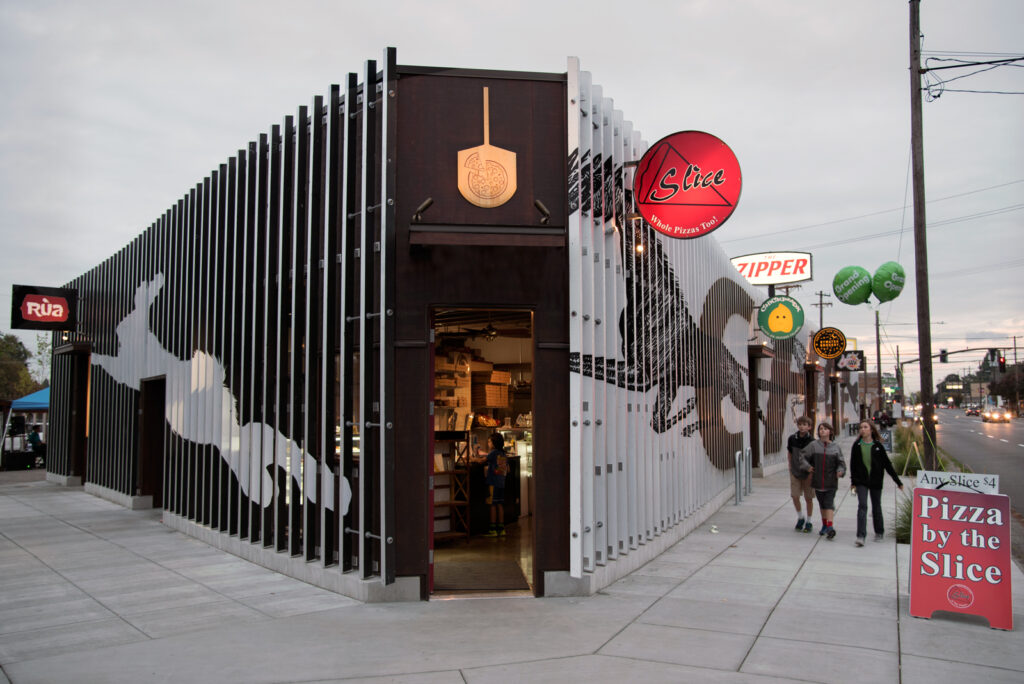
JP: What advice would you give your younger self if you were given the opportunity?
KC: To young developers, I would first ask if you have a rich aunt. Then I would start small. Just be successful enough that you can do it again. Then after the second one, do the third one, and then do a fourth one. Don’t be in a hurry, but make everything you do wonderful. You just have to be in the black. It doesn’t have to be in the black by six-figures. I don’t own a boat. The only reason to do a bigger and more profitable building would be to buy a bigger boat. I don’t give a shit about that.
For more on Kevin Cavenaugh, see the book Architect & Developer: A Guide to Self-Initiating Projects. See more articles about Kevin {here}.
